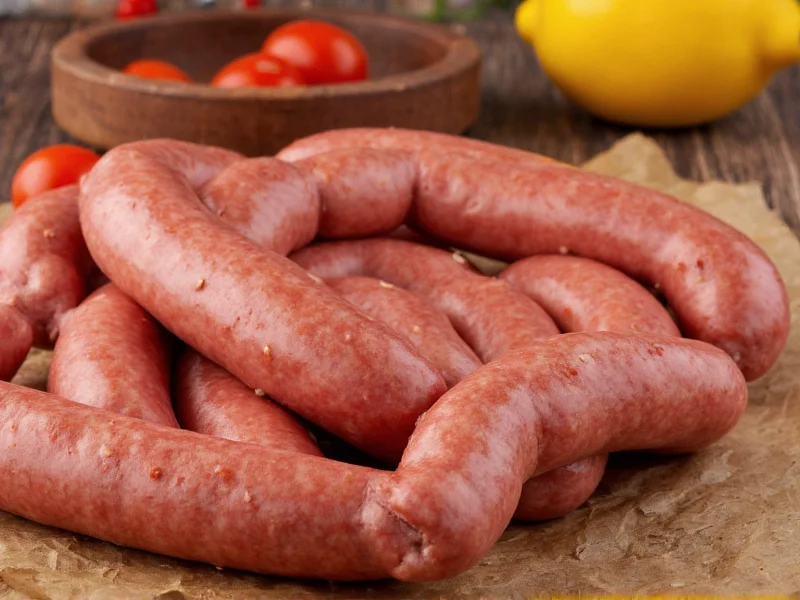For consumers searching for information about this nostalgic food brand, understanding the complete history of Johnson Sausage provides valuable context about American food industry evolution. This historical overview examines the rise and eventual disappearance of a once-popular meat product line that graced dinner tables across the United States.
The Origins of Johnson Sausage Company
Founded in 1919 by John H. Johnson in Chicago, Illinois, Johnson Sausage Company quickly established itself as a regional favorite known for its distinctive smoked sausages and breakfast links. The company's early success stemmed from its commitment to quality ingredients and traditional European sausage-making techniques adapted for American tastes.
Unlike many competitors who began using artificial casings and preservatives during the mid-20th century, Johnson Sausage maintained natural casings and limited preservatives in their premium product lines. This dedication to quality earned the brand a loyal following, particularly in the Midwest where the company maintained its primary production facilities.
Product Line and Market Position
Johnson Sausage offered several distinctive product categories that set them apart in the competitive meat market:
| Product Category | Key Features | Market Position |
|---|---|---|
| Breakfast Links | Natural pork casing, maple-infused varieties | Premium breakfast meat segment |
| Smoked Bratwurst | Slow-smoked over hickory, traditional German recipe | Specialty sausage market |
| Polish Sausage | Garlic-forward recipe, coarse grind texture | Midwestern ethnic food staple |
| Corned Beef Hash | Real meat chunks, minimal gravy | Convenience food alternative |
Corporate Timeline and Ownership Changes
The company remained family-owned until 1967 when it was acquired by General Foods Corporation as part of their strategy to expand their refrigerated food portfolio. Under General Foods ownership, the Johnson Sausage brand maintained its identity while benefiting from national distribution networks.
A second significant transition occurred in 1988 when Kraft Foods purchased the Johnson Sausage product lines during their acquisition of several General Foods brands. This marked the beginning of the brand's gradual integration into larger product families.
By the mid-1990s, Kraft had discontinued the standalone Johnson Sausage branding, incorporating select recipes into their Oscar Mayer product lines. The distinctive Johnson Sausage packaging and branding disappeared from supermarket shelves by 1998.
Legacy and Influence on Modern Sausage Production
Though the Johnson Sausage brand no longer exists as a distinct product line, its influence persists in several ways:
- Several former Johnson Sausage recipes were incorporated into Oscar Mayer's premium product lines
- The company's commitment to natural casings influenced industry standards for premium sausage products
- Johnson's maple-flavored breakfast links inspired similar products across multiple brands
- Production techniques developed by Johnson Sausage engineers were adopted industry-wide
Collectors of vintage food packaging occasionally find original Johnson Sausage tins and advertisements from the 1940s-1970s, which have become sought-after Americana items. These historical artifacts demonstrate the brand's marketing approach and product evolution over its 80-year history.
Where Former Johnson Sausage Products Live On
Consumers searching for where to find Johnson Sausage today should understand that the original brand is discontinued. However, some regional producers create products inspired by the original Johnson Sausage recipes:
- Oscar Mayer's premium breakfast line incorporates elements of the original Johnson maple link recipe
- Several Midwestern specialty meat producers offer "heritage" sausages referencing Johnson's traditional methods
- Some regional grocery chains have private label sausages that mimic the texture and flavor profile
For those interested in recreating vintage Johnson Sausage recipes at home, the key characteristics to replicate include coarse meat grind, natural hog casings, and balanced seasoning without excessive preservatives. Traditional smoking methods over hickory wood were also central to the brand's distinctive flavor profile.
Understanding the Disappearance of Historic Food Brands
The story of Johnson Sausage represents a common pattern in the American food industry where regional specialty brands get acquired by larger corporations, often losing their distinct identity in the process. This history of Johnson Sausage brand evolution illustrates how consolidation in the food industry has transformed the supermarket landscape over the past century.
For food historians and consumers interested in vintage Johnson Sausage products, the brand serves as an example of how traditional food production methods have evolved. While modern food safety standards and production efficiencies have benefits, they often come at the cost of distinctive regional flavors and production techniques that defined brands like Johnson Sausage.
Today, the search for what happened to Johnson Sausage continues to generate interest among those who remember the brand from their childhood or who study the evolution of American food manufacturing. Though the original products are no longer available, understanding this brand's journey provides valuable insight into the changing nature of America's food landscape.











 浙公网安备
33010002000092号
浙公网安备
33010002000092号 浙B2-20120091-4
浙B2-20120091-4